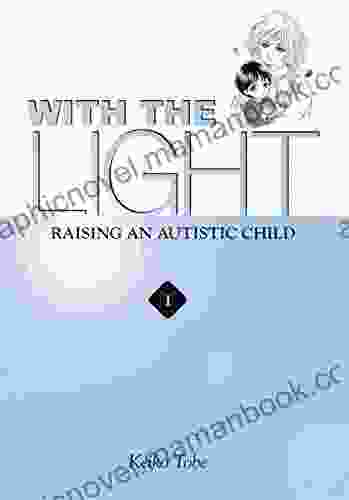Breaking Free from the Chains of Control: Embracing Vulnerability and Autonomy in Relationships

Relationships, by their very nature, involve a delicate dance between autonomy and interdependence. However, when one partner exerts excessive control over the other, the relationship becomes stifled and toxic. Giving up control is not about surrendering one's identity or becoming subservient but about fostering trust, mutual respect, and personal growth.
1. Understanding the Dynamics of Control
Control in relationships manifests in various forms, ranging from subtle manipulations to overt coercion. Controlling partners may use tactics such as:
- Emotional manipulation: Guilt-tripping, emotional blackmail, and gaslighting.
- Physical coercion: Threats, violence, or withholding physical affection.
- Financial control: Managing the partner's finances or preventing them from working.
- Social isolation: Limiting the partner's contact with friends and family.
- Technological surveillance: Monitoring the partner's phone, social media, or whereabouts.
2. The Impact of Control on Relationships
The effects of control on relationships are devastating. It creates a climate of fear, mistrust, and resentment. It stifles personal growth, erodes self-esteem, and damages the emotional bond between partners.
4 out of 5
| Language | : | English |
| File size | : | 576 KB |
| Text-to-Speech | : | Enabled |
| Enhanced typesetting | : | Enabled |
| Word Wise | : | Enabled |
| Print length | : | 20 pages |
| Lending | : | Enabled |
| Screen Reader | : | Supported |
2.1 Impact on the Controlled Partner:
- Anxiety, fear, and depression
- Low self-esteem and feelings of inadequacy
- Isolation and limited social support
- Loss of autonomy and sense of self
- Difficulty making decisions or taking initiative
2.2 Impact on the Controlling Partner:
- Rigid and insecure attachment style
- Fear of abandonment or betrayal
- Lack of trust in others
- Difficulty with emotional regulation
- Inability to tolerate dissent or differing opinions
3. Breaking the Cycle of Control
Recognizing the harmful consequences of control is crucial. Breaking the cycle requires both partners to acknowledge the problem and commit to change.
3.1 For the Controlling Partner:
- Recognize and acknowledge the controlling behaviors.
- Seek professional help to address underlying issues such as insecurity and anxiety.
- Practice mindful communication and conflict resolution.
- Give the partner space and autonomy.
- Build trust by being consistent and reliable.
3.2 For the Controlled Partner:
- Set clear boundaries and communicate them assertively.
- Learn to trust and rely on oneself.
- Seek support from friends, family, or a therapist.
- Engage in self-care activities that promote emotional well-being.
- If necessary, consider ending the relationship if the controlling behavior persists.
4. The Path to Autonomy and Interdependence
Giving up control is not about abandoning all boundaries or becoming doormats. It's about creating a healthy balance between autonomy and interdependence. In a truly fulfilling relationship, both partners:
- Respect each other's individuality and personal growth.
- Trust each other to make decisions and take responsibility.
- Support each other's dreams and aspirations.
- Share household tasks and responsibilities equitably.
- Communicate openly and honestly about their needs and feelings.
- Set boundaries to maintain individual space and self-care.
- Celebrate each other's successes and provide comfort in times of hardship.
5.
Giving up control in relationships is not a sign of weakness but a courageous act that opens the door to intimacy, vulnerability, and personal freedom. It requires effort, patience, and a commitment to growth. By breaking the cycle of control, partners can create a relationship that is both fulfilling and empowering for both individuals.
4 out of 5
| Language | : | English |
| File size | : | 576 KB |
| Text-to-Speech | : | Enabled |
| Enhanced typesetting | : | Enabled |
| Word Wise | : | Enabled |
| Print length | : | 20 pages |
| Lending | : | Enabled |
| Screen Reader | : | Supported |
Do you want to contribute by writing guest posts on this blog?
Please contact us and send us a resume of previous articles that you have written.
 Top Book
Top Book Novel
Novel Fiction
Fiction Nonfiction
Nonfiction Literature
Literature Paperback
Paperback Hardcover
Hardcover E-book
E-book Audiobook
Audiobook Bestseller
Bestseller Classic
Classic Mystery
Mystery Thriller
Thriller Romance
Romance Fantasy
Fantasy Science Fiction
Science Fiction Biography
Biography Memoir
Memoir Autobiography
Autobiography Poetry
Poetry Drama
Drama Historical Fiction
Historical Fiction Self-help
Self-help Young Adult
Young Adult Childrens Books
Childrens Books Graphic Novel
Graphic Novel Anthology
Anthology Series
Series Encyclopedia
Encyclopedia Reference
Reference Guidebook
Guidebook Textbook
Textbook Workbook
Workbook Journal
Journal Diary
Diary Manuscript
Manuscript Folio
Folio Pulp Fiction
Pulp Fiction Short Stories
Short Stories Fairy Tales
Fairy Tales Fables
Fables Mythology
Mythology Philosophy
Philosophy Religion
Religion Spirituality
Spirituality Essays
Essays Critique
Critique Commentary
Commentary Glossary
Glossary Bibliography
Bibliography Index
Index Table of Contents
Table of Contents Preface
Preface Introduction
Introduction Foreword
Foreword Afterword
Afterword Appendices
Appendices Annotations
Annotations Footnotes
Footnotes Epilogue
Epilogue Prologue
Prologue Judith Arnopp
Judith Arnopp Missie Grover
Missie Grover Kate Meader
Kate Meader Darlene Danaby
Darlene Danaby Sean O Casey
Sean O Casey Erika Busecan
Erika Busecan Lily Baxter
Lily Baxter Judy Jones
Judy Jones Anandi Sano
Anandi Sano Luigi Pirandello
Luigi Pirandello Jean Oram
Jean Oram Peter Conradi
Peter Conradi Amy Medling
Amy Medling Liz Michalski
Liz Michalski Rick Riordan
Rick Riordan Laura Hudson
Laura Hudson James Aylott
James Aylott G K Parks
G K Parks John Jackson Miller
John Jackson Miller J A Konrath
J A Konrath
Light bulbAdvertise smarter! Our strategic ad space ensures maximum exposure. Reserve your spot today!

 Christian BarnesUnveiling the Enigmatic World of Ambroziak: The Maestro of the Piano String
Christian BarnesUnveiling the Enigmatic World of Ambroziak: The Maestro of the Piano String Felix CarterFollow ·4.7k
Felix CarterFollow ·4.7k Steve CarterFollow ·13.3k
Steve CarterFollow ·13.3k Keith CoxFollow ·14k
Keith CoxFollow ·14k Aron CoxFollow ·16.3k
Aron CoxFollow ·16.3k Stan WardFollow ·18.6k
Stan WardFollow ·18.6k Douglas PowellFollow ·15.3k
Douglas PowellFollow ·15.3k Fletcher MitchellFollow ·9.8k
Fletcher MitchellFollow ·9.8k Sidney CoxFollow ·12.6k
Sidney CoxFollow ·12.6k

 Rex Hayes
Rex HayesWorld of Dead Volume Issue: An In-Depth Analysis
The World of Dead volume issue...

 Nathan Reed
Nathan ReedHard Lessons Learned from ERP Rollouts: A Hivemind...
Enterprise...

 Fernando Bell
Fernando BellWith the Light, Vol. 1: Illuminating the Extraordinary...
The advent of parenthood is a...

 Wesley Reed
Wesley ReedNo Helping Hand: True Story of Deadly Waves
In December 2004,...

 Ruben Cox
Ruben CoxIntroduction to Electrodynamics by David Griffiths: A...
to Electrodynamics by...
4 out of 5
| Language | : | English |
| File size | : | 576 KB |
| Text-to-Speech | : | Enabled |
| Enhanced typesetting | : | Enabled |
| Word Wise | : | Enabled |
| Print length | : | 20 pages |
| Lending | : | Enabled |
| Screen Reader | : | Supported |












